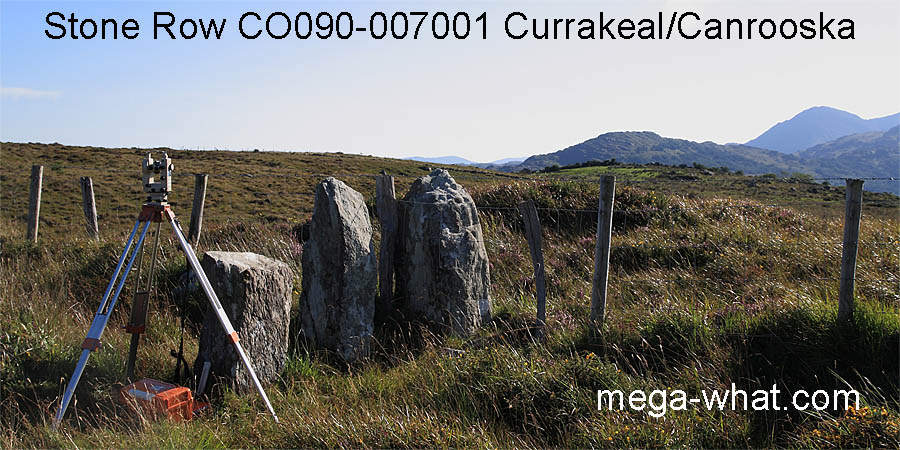
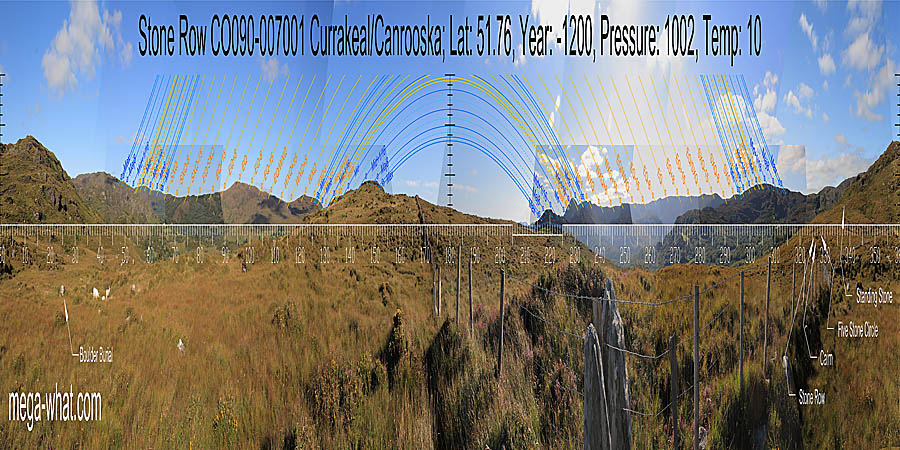 Currakeal / Canrooska Stone Row is a couple of kilometres north of Glengarriff.
On the crest of a gentle ridge and bisected by the townland boundary, it is part of a five site local monument group.
There are two Stone Rows in the group and this is the south-most.
Currakeal / Canrooska Stone Row is a couple of kilometres north of Glengarriff.
On the crest of a gentle ridge and bisected by the townland boundary, it is part of a five site local monument group.
There are two Stone Rows in the group and this is the south-most.
South is on a slight rise, on a local slope on the left side of a dip [Pic].
North is on the left slope of the central dip of a nearby hilltop [Pic].
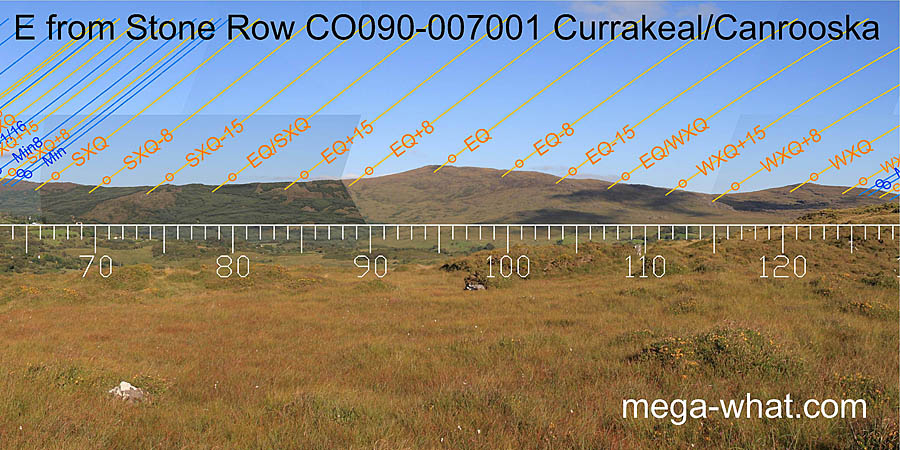 To the east, the equinoctial hilltop has a declination of +0.3° from here and its north basal step is accurate for a quarter-month before autumn equinox.
Both left and right dips are a quarter-month from the cross-quarter.
To the east, the equinoctial hilltop has a declination of +0.3° from here and its north basal step is accurate for a quarter-month before autumn equinox.
Both left and right dips are a quarter-month from the cross-quarter.
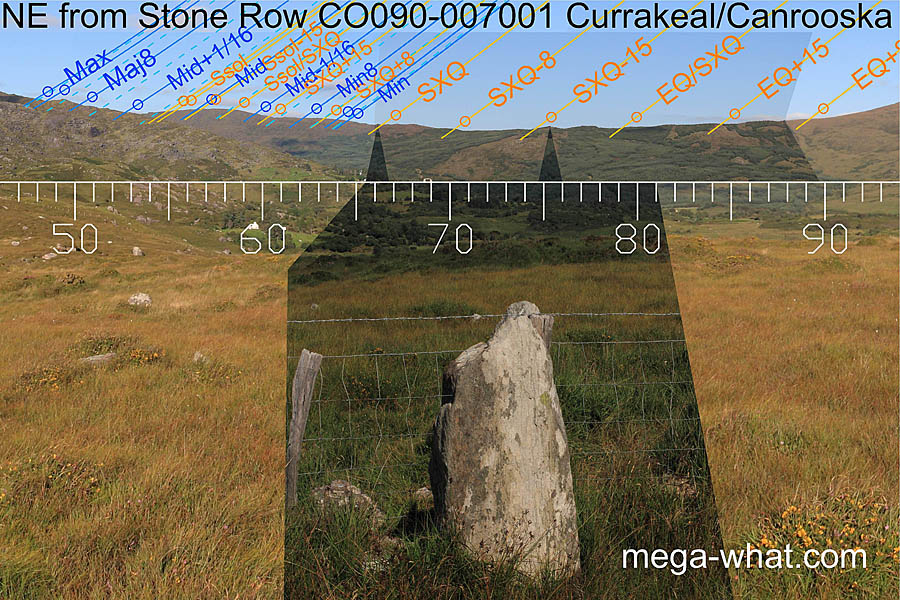
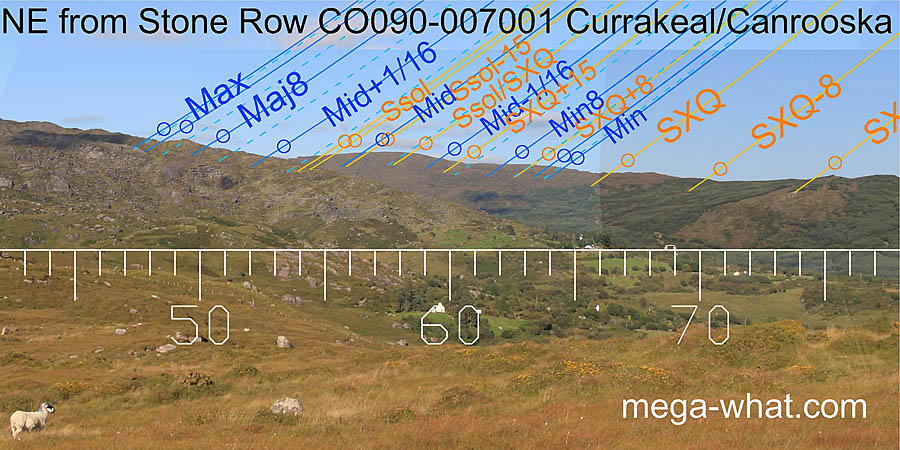 North-eastwards, the axial reverse is in a generally summer cross-quarter direction. The large south-west stone conceals the other two.
Lunar major standstillLunistice positions vary cyclically over an 18.6 year period but are fairly static for more than a year at either end of the range
is at a notable position but summer solstice has no accurate marker.
North-eastwards, the axial reverse is in a generally summer cross-quarter direction. The large south-west stone conceals the other two.
Lunar major standstillLunistice positions vary cyclically over an 18.6 year period but are fairly static for more than a year at either end of the range
is at a notable position but summer solstice has no accurate marker.
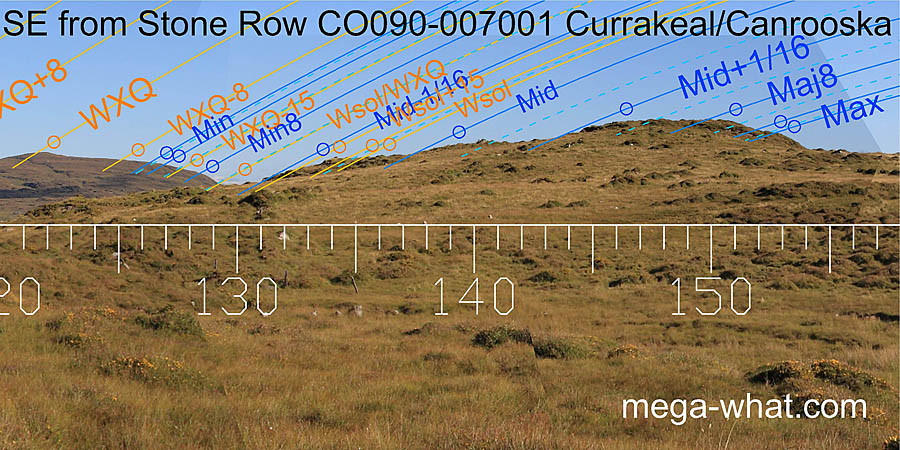 South-eastwards, the winter solstice and the major end of the lunisticeLunistices are the most northerly and southerly moons of the month. The lunar equivalent of solstices - more.
range occur on fairly local ground.
From this site, the intersect notch marks the solstice / cross-quarter midpoint and is c.200m away.
The further hilltop is accurate for the cross-quarter itself.
These points in particular show significant differences when viewed from the other sites.
South-eastwards, the winter solstice and the major end of the lunisticeLunistices are the most northerly and southerly moons of the month. The lunar equivalent of solstices - more.
range occur on fairly local ground.
From this site, the intersect notch marks the solstice / cross-quarter midpoint and is c.200m away.
The further hilltop is accurate for the cross-quarter itself.
These points in particular show significant differences when viewed from the other sites.
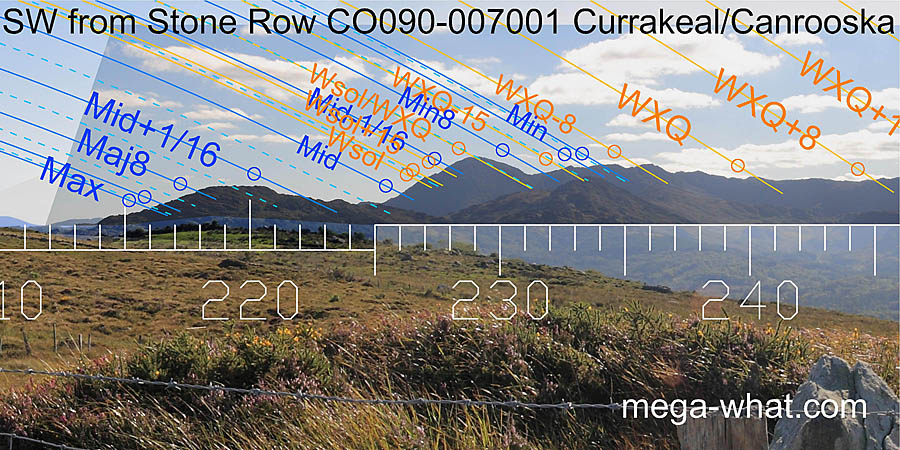 The south-western horizon is fairly distant and both rows give similar results.
Winter solstice sunset occurring around a prominent (to the naked eye) pointed rock on the Sugarloaf's south slope is a notable feature [Enlargement].
The south-western horizon is fairly distant and both rows give similar results.
Winter solstice sunset occurring around a prominent (to the naked eye) pointed rock on the Sugarloaf's south slope is a notable feature [Enlargement].
Lunar positions for the major half of the cycle show greater variation because they occur on a nearer hill.
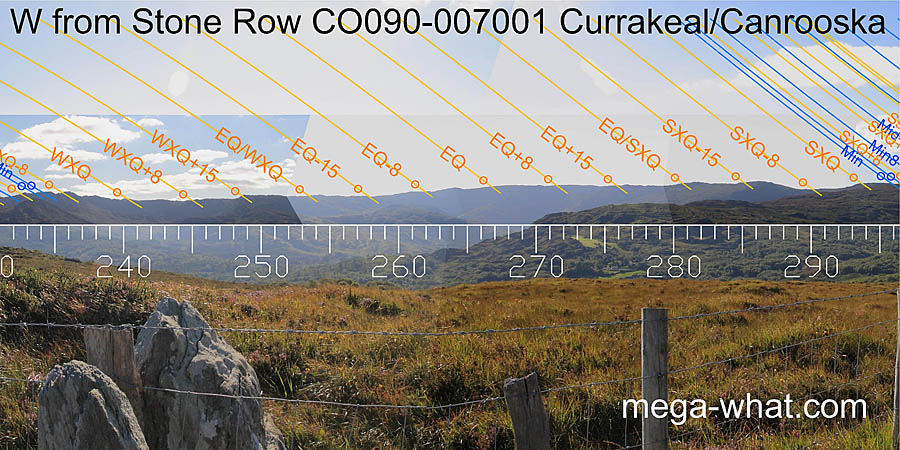 To the west, solar positions are slightly shifted southwards compared with the
other Stone Row which probably has the better overall fit in this direction.
To the west, solar positions are slightly shifted southwards compared with the
other Stone Row which probably has the better overall fit in this direction.
The axis of this Stone Row is perhaps a half-month north of the winter cross-quarter [Pic] but the row is not straight.
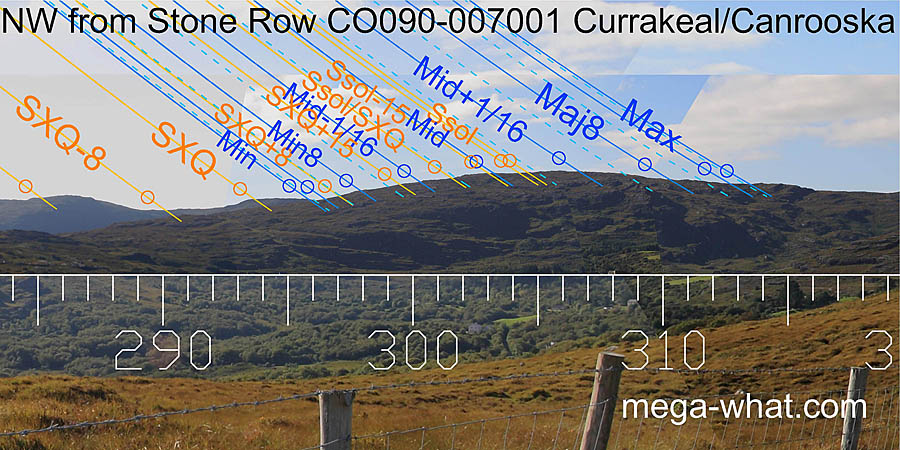 "LunisticeLunistices are the most northerly and southerly moons of the month. The lunar equivalent of solstices - more.
range spanning the hilltop with summer solstice sunset in the middle" is the basic north-western theme.
Summer cross-quarters are on the preceding rise and the dip before that is a quarter-month before Bealtaine.
"LunisticeLunistices are the most northerly and southerly moons of the month. The lunar equivalent of solstices - more.
range spanning the hilltop with summer solstice sunset in the middle" is the basic north-western theme.
Summer cross-quarters are on the preceding rise and the dip before that is a quarter-month before Bealtaine.
- Stone Row CO090-006001, c.110m to the north-west, forms a complementary pair with this one. On its own, neither is perfect but the combination gives good all round results. This makes it seem likely that they were planned and built at about the same time.
- Boulder-Burial CO90-007002, between the rows, occupies a less favoured position that does nonetheless have some advantages of its own. This, combined with use of a Stone Row as a visual target suggests that it was built later.
- The Five Stone Circle (CO090-006002) people were clearly later again. Having failed to find a location with its own useful variations they built close to the north-most Stone Row, effectively sharing its position. Similarly, a small cairn (CO090-006003) was built close to the other side of it, clearly indicating that this was regarded as the best overall position.
- CO090-023 is c.300m to the north-north-west.
- CO090-008001 is c.530m to the south-south-west and has a Radial Stone Cairn beside it.
References
- Archaeological Survey of Ireland, record details. www.archaeology.ie/archaeological-survey-ireland
- Ó'NUALLÁIN, SEÁN 1988 Stone Rows in the South of Ireland. Proceedings of the Royal Irish Academy 88c:179-256, p234, No.31.
- POWER, D. et al. 1992 Archaeological Inventory of County Cork, Vol 1: West Cork. Dublin: Stationary Office. p35, no.146.
- RUGGLES, C.L.N. 1999 Astronomy in Prehistoric Britain and Ireland. Newhaven & London: Yale University Press. CKR65.
- RUGGLES, C.L.N. 1996 Stone Rows of Three or More Stones in South-West Ireland. Archaeoastronomy 21 (Journal of the History of Astronomy xxvii) S55-S71.
- RUGGLES, C.L.N. & Burl, H.A.W. 1995 Astronomical Influences on Prehistoric Ritual Architecture in North-Western Europe: The Case of the Stone Rows. Vistas in Astronomy 39:517-528. Oxford: Elsevier Science Ltd.
